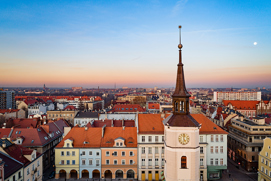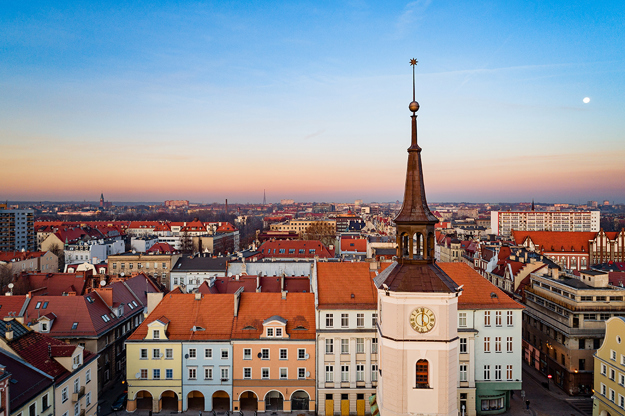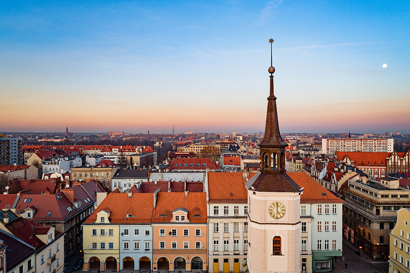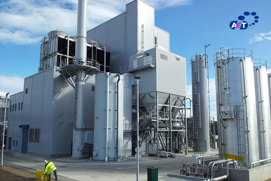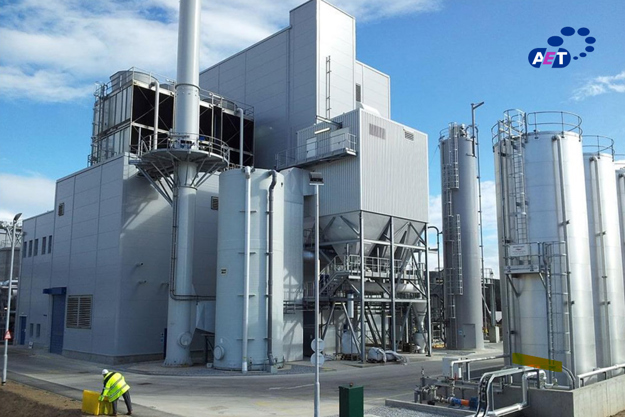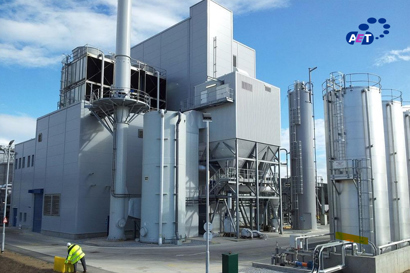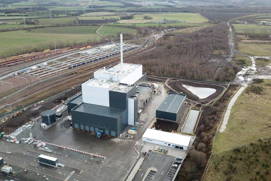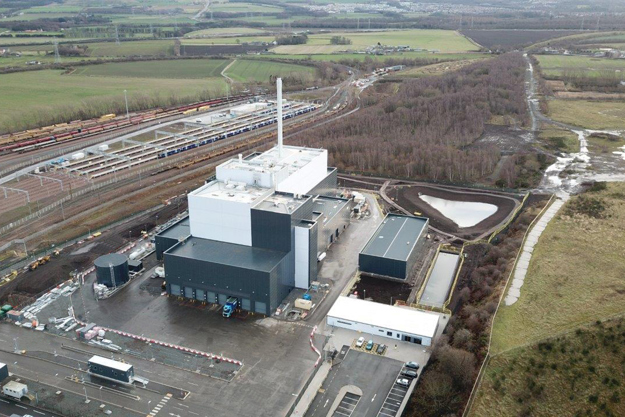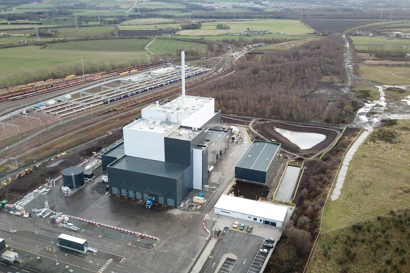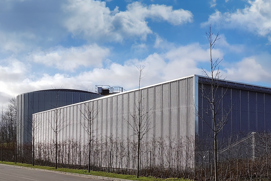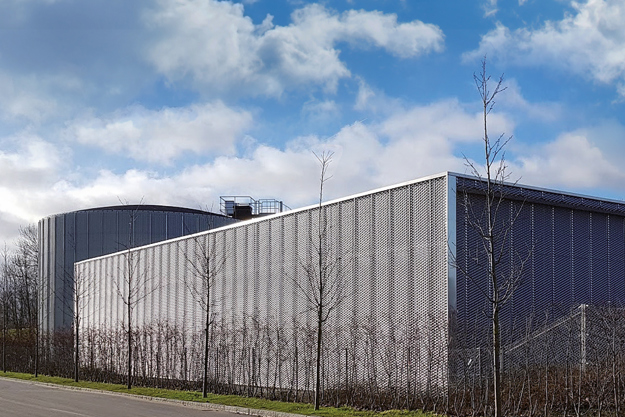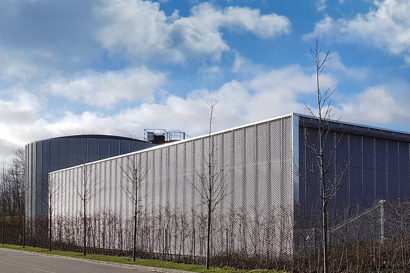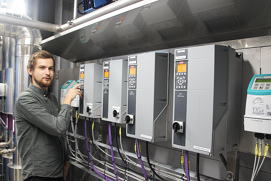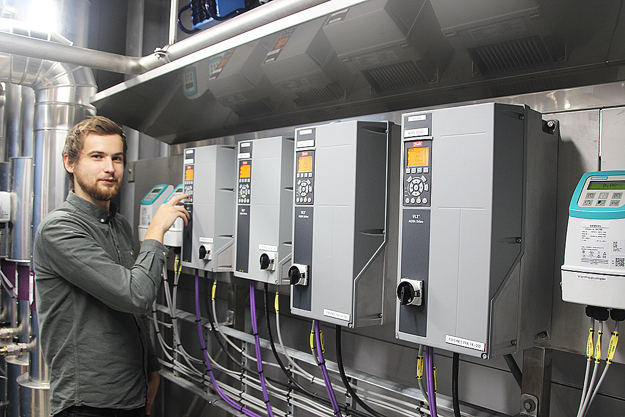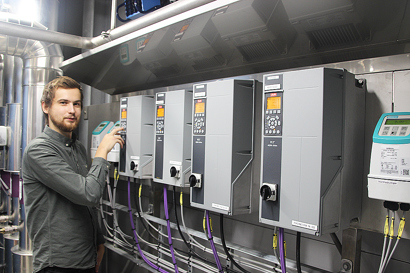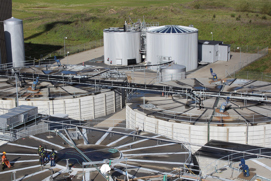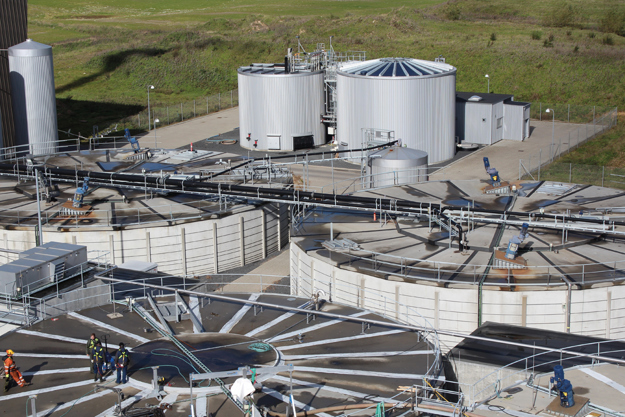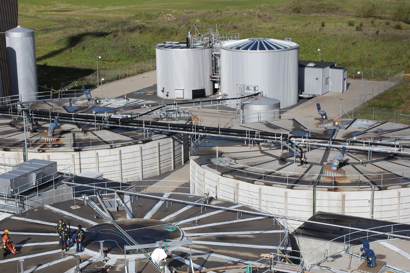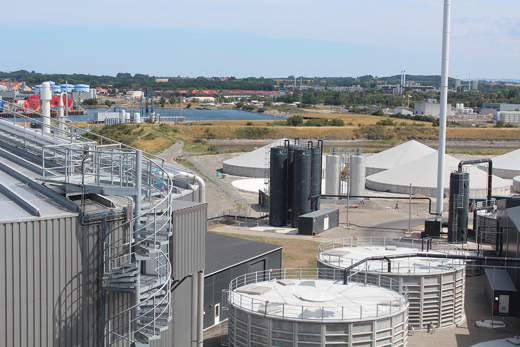
At Bigadan’s Kalundborg Bioenergy plant in Denmark, AC drives from Danfoss help convert biomass from insulin and enzyme production to energy.
Biogas generated from pharmaceutical and other organic waste is purified to the same quality as the natural gas and is therefore suitable for distribution in the Danish natural gas grid. The pure biogas is an important CO2-neutral energy source that can be used directly for fueling city buses and in power plants to produce electricity and district heating.
“This is a good example of sector coupling, where all energy forms in the future will be linked together, such that society can use the least expensive and most environmentally friendly energy sources at all times”, explains Erik Lundsgaard, Production Manager, Bigadan.
Energy generation case studies
-
if (isSmallPicture) {


 DrivePro® services enhance security of heat supply for 49,000 apartments in Gliwice
DrivePro® services enhance security of heat supply for 49,000 apartments in GliwicePOLAND: At district heating company PEC Gliwice, AC drives reduce energy consumption of electric motors by up to 40%. DrivePro® Site Assessment audits help ensure optimal efficiency.
-
if (isSmallPicture) {


 DrivePro® Lifecycle Services secure maximum uptime for Rothes CoRDe
DrivePro® Lifecycle Services secure maximum uptime for Rothes CoRDeSCOTLAND: The Rothes CoRDe plant, a biomass-fired combined heat and power (CHP) plant, ensured maximum uptime thanks to several DrivePro® Lifecycle Services.
-
if (isSmallPicture) {


 From waste to sustainable energy: electricity and heating for the city
From waste to sustainable energy: electricity and heating for the citySCOTLAND: In line with the zero-waste objectives of the Scottish government, treatment of non-recyclable urban waste contributes to eliminating landfill whilst generating electricity and heat. Equipped with high-efficiency VACON® NXP drives, the process generates heat enough to supply 25,000 households.
-
if (isSmallPicture) {


 VLT® drives run the world’s smartest district energy system
VLT® drives run the world’s smartest district energy systemDENMARK: Taarnby Municipality within Greater Copenhagen is the first to integrate the production of district cooling and district heating in combination with ground source cooling and chilled water storage in one facility that also exploits surplus heat from a nearby wastewater treatment plant. This symbiosis allows the utility company to provide building owners in the district with competitive and environmentally friendly cooling – while generating more cost-effective heating to the district heating network.
-
if (isSmallPicture) {


 Electrification and sector coupling achieve CO2 goals at FlexHeat Nordhavn
Electrification and sector coupling achieve CO2 goals at FlexHeat NordhavnDENMARK: The FlexHeat district heating plant at Copenhagen’s Nordhavn harbor emits 315 fewer tonnes per annum of CO2 than the LPG gas-based alternative.
-
if (isSmallPicture) {


 World leader in biogas reduces CO2 emissions by 50,000 t annually
World leader in biogas reduces CO2 emissions by 50,000 t annuallyBy generating power and heat from biogas instead of fossil fuels, MEC-BioGas reduces its CO2 footprint by 50000 tpa. Danfoss VLT® drives ensure optimal uptime in the 24/7 operations.

